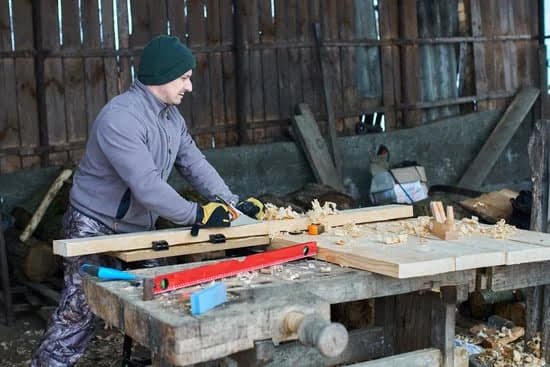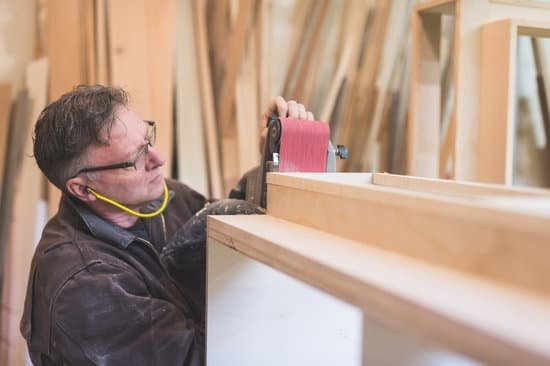Woodworking is a craft that demands precision and skill, and having a high-quality woodworking bench is essential for any woodworker. A well-built bench not only provides a stable and sturdy work surface but also enhances efficiency and accuracy in every project. In this article, we will guide you through the process of building your own woodworking bench, from planning and designing to adding key features and finishing touches.
A custom-made woodworking bench offers numerous benefits. First and foremost, it provides stability, allowing you to tackle even the most intricate pieces with confidence. It also offers ample space for all your projects, ensuring that you have enough room to work comfortably. Additionally, a customized bench allows you to tailor it to your specific needs, such as incorporating storage options like drawers or shelves for easy access to tools and materials.
When embarking on the journey of building your own bench, careful planning and designing are crucial. You need to assess your workspace requirements and determine the dimensions that will best suit your needs. Furthermore, choosing the right materials is vital for durability and functionality. Evaluating different designs and styles will also help you find one that aligns with your preferences.
In the coming sections of this article, we will discuss in detail everything you need to know about building your own woodworking bench. We will provide guidance on gathering the necessary tools and materials while offering tips on sourcing high-quality materials at an affordable price. Stay tuned as we delve into measuring and cutting techniques, step-by-step instructions for assembling the frame and building the benchtop securely to achieve an exceptional finished product.
Planning and Designing Your Woodworking Bench
When embarking on the journey of building your own woodworking bench, careful planning and designing are essential for creating a bench that meets your specific needs. This section will guide you through the process of assessing your requirements, choosing the right materials, and evaluating different bench designs and styles.
First, take the time to assess your needs and workspace requirements. Consider the type of projects you typically work on, as well as any specific tools or equipment you may need to accommodate. Think about the size of your woodworking space and make sure to measure it accurately. This will help you determine the dimensions of your bench, ensuring it fits comfortably in your workshop.
Next, selecting the right materials is crucial for durability and functionality. When choosing wood for your bench, consider factors such as strength, stability, and resistance to wear. Commonly used woods for workbenches include hardwoods like maple or beech due to their durability. Additionally, think about whether you want a solid wood top or if you prefer a top made from layered plywood.
Once you have an idea of your needs and the materials you want to use, it’s time to evaluate different bench designs and styles. Look at various plans and blueprints that align with what you envision for your woodworking bench. There are numerous design options available; some provide additional features like built-in storage or adjustable height capabilities. Take note of features that would enhance efficiency and precision in your work.
Planning and designing your woodworking bench is crucial for ensuring a successful build that meets all of your requirements. By carefully considering your needs, selecting appropriate materials, and evaluating different designs, you can create a custom-made bench that enhances both productivity and enjoyment in your woodworking journey.
Gathering Your Tools and Materials
To successfully build your own woodworking bench, it is essential to gather all the necessary tools and materials. Having the right tools and quality materials will ensure that your bench is built to last and functions effectively. Here are some key considerations when gathering your tools and materials:
Essential Tools Needed for Building a Woodworking Bench
To begin, it’s important to have a comprehensive set of tools that will enable you to complete each step of the construction process. Some essential tools for building a woodworking bench include:
- Power Tools: A circular saw or table saw, a drill/driver, an impact driver, and an orbital sander will greatly assist in cutting and sanding wood accurately.
- Hand Tools: A chisel set, a mallet, a hand plane, various clamps, measuring tape, a combination square, and sharp marking tools such as pencils or knives are necessary for precise measurements and clean finishes.
- Safety Gear: Don’t forget to prioritize safety by wearing protective gear such as safety glasses, ear protection, gloves, and a dust mask while working with wood and power tools.
Recommended Materials for Building Your Woodworking Bench
Choosing the right materials is crucial for constructing a durable and functional woodworking bench. Consider these options when selecting your materials:
- Types of Wood: Common choices for the bench frame include hardwoods like oak or maple due to their strength and resistance to wear. For the benchtop, consider using beech or birch plywood as they offer stability while being less prone to warping.
- Hardware: Select high-quality hardware such as screws, bolts, washers, nuts, hinges, drawer slides (if applicable), and any other accessories needed based on your chosen bench design.
Tips for Sourcing High-Quality Materials at an Affordable Price
Building your own woodworking bench can be costly if you’re not mindful of your budget. Here are a few tips for sourcing high-quality materials at an affordable price:
- Salvaged Materials: Consider repurposing or upcycling wood from old furniture or construction sites. This can save money while also giving your bench a unique character.
- Local Lumberyards: Check out local lumberyards instead of big-box stores as they often have a wider selection of high-quality wood at competitive prices.
- Online Marketplaces and Classifieds: Explore online platforms like Craigslist or Facebook Marketplace for used woodworking tools and surplus wood that others may be selling at discounted rates.
By gathering all the necessary tools and materials, you’ll be well-equipped to construct a woodworking bench that meets your needs and preferences. Remember to invest in quality materials and prioritize safety, as these factors will contribute to the longevity and functionality of your bench.
Measuring and Cutting the Wood
When embarking on the project of building your own woodworking bench, one of the crucial steps is measuring and cutting the wood. This section will guide you through the process of properly measuring and marking the wood for accurate cuts, as well as provide tips on safe and efficient cutting techniques for different bench components.
Properly Measuring and Marking the Wood
Before you make any cuts, it’s important to take precise measurements to ensure that all your components fit together seamlessly. Start by creating a detailed plan or blueprint of your woodworking bench, including specific dimensions for each part. Use a tape measure or a ruler to accurately measure the length, width, and thickness required for your bench frame and top.
Once you have your measurements, it’s time to mark the wood. Use a pencil or a marking knife to make clear and visible marks where you will be making your cuts. Double-check your measurements before proceeding to ensure accuracy.
Safe and Efficient Cutting Techniques
When it comes to cutting the wood for your woodworking bench, safety should always be a top priority. Make sure you are wearing appropriate safety gear, such as safety glasses and gloves. Additionally, ensure that you are using sharp tools in good working condition.
The cutting technique will vary depending on the type of tool you are using. For straight-line cuts, a circular saw or table saw can be used. It’s important to keep the blade aligned with your marked line and move steadily through the cut. If you’re making curved or intricate cuts, a jigsaw or coping saw may be necessary.
Tools and Techniques for Clean and Precise Cuts
To achieve clean and precise cuts, there are several tools and techniques that can help. A miter box can assist in making accurate angle cuts, while a guide rail can help with straight-line cuts using a circular saw.
Clamping down your wood securely before cutting can also add stability and prevent any unwanted movement. This can be done using clamps or a bench vise, ensuring that your wood is firmly in place.
In addition to proper tools and techniques, taking your time during the cutting process is crucial. Rushing through cuts can lead to mistakes or uneven edges. Remember to practice patience and maintain focus to achieve the best results.
By following these measuring and cutting guidelines, you will be able to accurately prepare the wood for your woodworking bench. The next section will cover assembling the bench frame, where you will begin to see your project take shape.
Assembling the Bench Frame
Once you have gathered all the necessary tools and materials, it’s time to start assembling the bench frame. The bench frame provides the structure and stability for your woodworking bench, so it is essential to construct it with precision and care.
Here is a step-by-step guide for constructing the bench frame:
- Start by laying out two long pieces of lumber for the sides of the frame. These will determine the length of your bench. Make sure they are parallel and evenly spaced.
- Next, cut four shorter pieces of lumber for the cross supports that will connect the two side pieces. These cross supports should be flush with the top of the side pieces.
- Use clamps or screws to attach each cross support to both side pieces. Ensure that everything is level and square as you go.
- Repeat this process for a second set of cross supports near the bottom of the side pieces. This will provide additional strength and rigidity to your bench frame.
- Once all four cross supports are securely attached, check that your bench frame is level and square again. Adjust if necessary before moving on.
Techniques for joining the wood securely:
There are several techniques you can use to ensure that your wood joints are secure and sturdy:
- Dowels: Dowels are wooden pegs that can be used to reinforce joints. They are inserted into pre-drilled holes in both pieces of wood and glued together.
- Biscuit joinery: Biscuits are small wooden discs that can be used with a biscuit joiner tool. They are inserted into slots cut into both pieces of wood before being glued together.
- Pocket hole screws: Pocket hole screws are self-tapping screws that can be used to join pieces of wood at an angle. A pocket hole jig is used to drill angled holes into the wood, allowing the screws to be hidden.
- Mortise and tenon joints: Mortise and tenon joints involve creating a rectangular slot (the mortise) in one piece of wood and a corresponding protrusion (the tenon) on the other piece. They are then fit together and secured with glue or wedges.
Tips for ensuring the bench frame is sturdy and level:
- Check for squareness: Use a carpenter’s square to check that all corners of your frame are at perfect right angles. If any corners are not square, make adjustments as needed.
- Use clamps: Clamps are essential for holding pieces of wood securely in place while you assemble the frame. Make sure everything is tightly clamped before drilling or screwing.
- Add diagonal bracing: If you want extra stability, consider adding diagonal braces to the corners or sides of your bench frame. This will help prevent any wobbling or movement during use.
By following these steps and incorporating these techniques, you can ensure that your bench frame is well-constructed and built to last. Once the bench frame is complete, you can move on to building the benchtop, which will provide a flat surface for all your woodworking projects.
Building the Benchtop
One of the most crucial aspects of building your own woodworking bench is constructing the benchtop. The benchtop is where you will carry out most of your woodworking tasks, so it’s essential to choose the right materials and techniques to ensure its functionality and durability.
Choosing the Ideal Wood Thickness and Type for the Benchtop
When selecting the wood for your benchtop, it’s important to consider both thickness and type. The thickness of the wood will depend on personal preference and intended use. Thicker benchtops are more robust and can handle heavy-duty tasks, while thinner ones may be suitable for lighter projects. Common choices for benchtop wood include hardwoods like maple or beech, which offer durability and resistance to wear and tear. Plywood can also provide a stable and affordable option.
Techniques for Flattening and Smoothing the Wood Surface
Before assembling the benchtop, it’s crucial to ensure that the wood surface is flat, level, smooth, and free from imperfections. This process begins by jointing each board to create straight edges. You can achieve this using a jointer or hand planes if you prefer traditional methods. After jointing, planing or sanding each board ensures an even surface.
To ensure a level work surface once your benchtop is assembled, consider using a thickness planer or router sled to flatten all boards uniformly. Finishing with finer grit sandpaper will help achieve a smooth surface ready for assembly.
Assembling the Benchtop Securely to the Frame
Once you have prepared each individual board, it’s time to assemble them into a solid benchtop. An effective way to join these boards together is by using techniques such as tongue-and-groove joints or domino joints. These types of joinery offer strength and stability while minimizing any potential movement over time.
During assembly, ensure that all boards are aligned correctly and secured tightly. You can use clamps or screws to hold the boards together temporarily while you secure them permanently with dowels, biscuits, or other appropriate joinery methods. It’s essential to apply even pressure throughout the assembly process to avoid any gaps or misalignment.
By carefully selecting your wood, flattening and smoothing the surface, and assembling it securely to the frame, you will create a benchtop that is not only functional but also a beautiful centerpiece for your woodworking area. With a solid benchtop in place, you can move on to adding key features and accessories that will enhance your woodworking experience further.
Adding Key Features and Accessories
One of the critical aspects of building your own woodworking bench is adding key features and accessories that will enhance its functionality and make your woodworking projects more efficient. By customizing your bench to suit your specific needs and preferences, you can create a workspace that is tailored to your woodworking style. This section will explore different options for adding key features and accessories to your woodworking bench.
One essential feature to consider is installing a vise or other clamping devices. A vise is a versatile tool that allows you to securely hold your workpiece in place while you work on it. It provides stability and prevents movement, ensuring precision in your cuts and joinery.
There are various types of vises available, such as front vises, end vises, and tail vises, each with its own advantages and suitable applications. When choosing a vise for your bench, consider factors such as the type of work you’ll be doing, the size of your workpieces, and personal preference.
In addition to a vise, incorporating storage options into your bench can help keep your tools organized and easily accessible. Drawers or shelves built into the bench provide convenient storage space for frequently used tools or materials.
You can customize the design and size of these storage compartments based on the tools you use most often or the specific needs of your projects. Consider including dividers or organizers within drawers or shelves to maximize space utilization and keep everything neat and tidy.
To further enhance the functionality of your woodworking bench, think about additional features that could benefit your workflow. For example, you might want to add integrated clamping systems or dog holes for easy workpiece securing, especially if you frequently work with larger or irregularly shaped pieces. Another option is installing an adjustable height mechanism for flexibility when working on different projects or accommodating different users.
By carefully considering these key features and accessories during the construction process, you can ensure that your woodworking bench meets all your requirements and makes your woodworking projects more enjoyable and efficient.
| Key Features and Accessories | Description |
|---|---|
| Vise or Clamping Devices | A vise provides stability and secure workpiece holding, enhancing precision. |
| Storage Options (Drawers or Shelves) | Integrated storage compartments keep tools organized and easily accessible. |
| Clamping Systems or Dog Holes | Adds flexibility for securing larger or irregularly shaped workpieces. |
| Adjustable Height Mechanism | Allows for flexible work height to accommodate different projects and users. |
Finishing Touches and Maintenance
Once you have completed the construction of your woodworking bench, it is important to focus on giving it the finishing touches that will not only enhance its appearance but also protect it from wear and tear. This section will guide you through the final steps of sanding, applying a protective finish or treatment, and maintaining your bench for long-lasting use.
The first step in completing your woodworking bench is sanding. Sanding helps to smooth out any rough spots or imperfections in the wood surface, giving it a professional finish. Start by using coarse-grit sandpaper to remove any larger blemishes or irregularities. Then gradually move to finer-grit sandpaper to achieve a smooth and even surface.
After sanding, it is crucial to apply a protective finish or treatment to the wood. This not only adds durability but also enhances the natural beauty of the wood. There are various options available for finishing your bench, including oils, varnishes, stains, and paints. Consider the type of wood you have used for your bench and choose a finish that complements its color and grain pattern.
Once you have chosen your desired finish, use a brush or cloth to apply it evenly across the entire surface of the bench. Follow the manufacturer’s instructions regarding drying time and additional coats if necessary. After the finish has dried completely, give your bench a final sanding with fine-grit sandpaper for a smooth and polished look.
To ensure longevity and optimal performance of your woodworking bench, regular maintenance is essential. Keep your bench clean by wiping away dust and debris after each project. Avoid placing heavy objects or excessive weight on the benchtop to prevent warping or sagging. If any parts become loose over time, tighten them immediately to maintain stability.
Taking proper care of your woodworking bench will not only prolong its lifespan but also provide you with an enjoyable work experience every time you use it. Remember that a well-maintained bench will continue to be the foundation for all your woodworking projects and allow you to fully enjoy the fruits of your labor.
| Finishing Touches | Maintenance Tips |
|---|---|
| Sanding the wood surface to achieve a smooth finish. | Regularly wiping away dust and debris after each project. |
| Choosing an appropriate protective finish or treatment. | Avoiding placing heavy objects on the benchtop to prevent warping. |
| Applying the finish evenly across the entire surface of the bench. | Tightening any loose parts to maintain stability. |
Conclusion
In conclusion, building your own woodworking bench can bring numerous benefits and truly enhance your woodworking experience. By investing the time and effort into constructing a high-quality bench, you are setting yourself up for success in your projects. The customized design ensures that it meets your specific needs and workspace requirements, increasing efficiency and precision in your work.
One of the major advantages of building your own woodworking bench is the sense of accomplishment and pride that comes with it. You will have created a functional piece of furniture with your own hands, tailored to your preferences. This is not only rewarding but also ensures that you have full control over the quality and craftsmanship of the bench.
Furthermore, building your own woodworking bench allows you to save money compared to purchasing one from a store. With careful planning and sourcing of high-quality materials at an affordable price, you can create a durable and long-lasting bench without breaking the bank.
In conclusion, take the leap and embark on this fulfilling project of building your own woodworking bench. Along with enjoying the fruits of your labor, you will benefit from increased efficiency, precision, and satisfaction in all future woodworking endeavors. Don’t be afraid to get creative with the design and incorporate features that suit your specific needs. Enjoy this journey into woodworking craftsmanship.

Hi everyone! I’m a woodworker and blogger, and this is my woodworking blog. In my blog, I share tips and tricks for woodworkers of all skill levels, as well as project ideas that you can try yourself.





